11 July 2023
Mostly cloudy, some rain
Top of 29 degrees
After a light breakfast from the convenience store across the road, we walked to the Kokeshi-bashi Bridge again. This 91-meter long and 7.8-meter-wide bridge, part of National Highway 457, runs over the Matsu-kawa River. On both sides and ends of the Kokeshi-bashi Bridge are metal three-meter-high kokeshi dolls, made in 1971. Kokeshi are wooden dolls from the Tohoku region of Japan, and Togatta has its own style of kokeshi dolls.
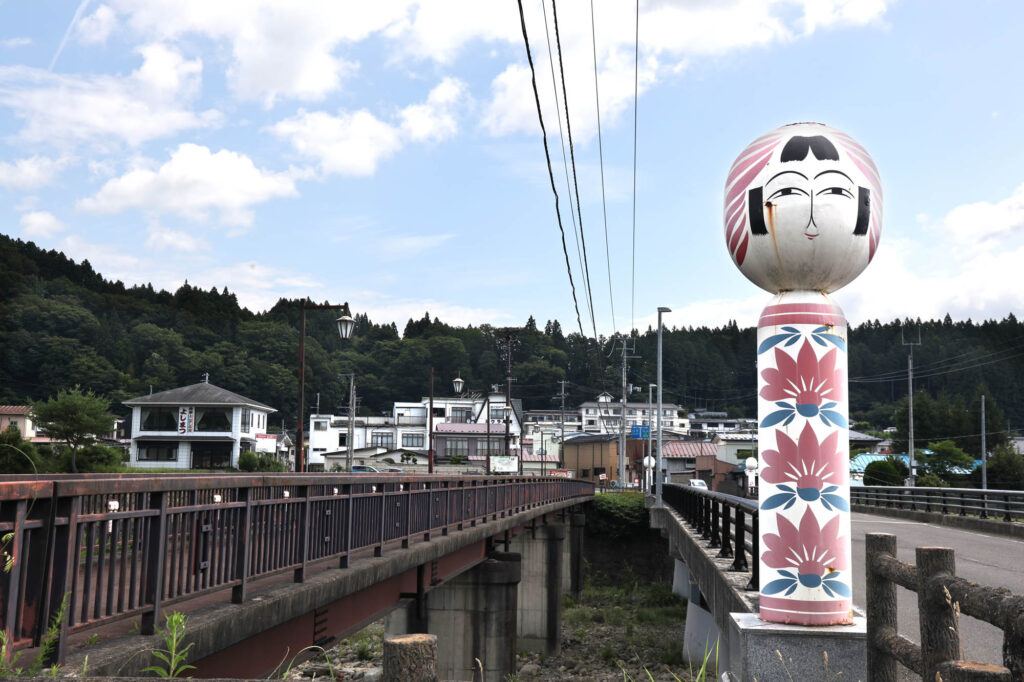
Kokeshi-bashi Bridge with Togatta Onsen in the background. Photo by Mayu Kanamori
From the bridge towards the west, we could see the Zao Mountain Ranges and a smaller mountain in the southeast. The names of these mountains were written on the wall of the Tourist Information Centre, and further explained by Onuma-san, who was working there. The mountains from left to right (south to north) are: Fubou-san (1705 meters), Minami, Byobu-dake (1810 meters), Byobu-dake (1825 meters), Ushiroeboshi-dake (1686 meters), Katta-dake (1758 meters), Kumano-dake (1841 meters) and Myogobo (1491 meters). In the southeast, we saw the Aoso-san (799 meters).
At 11 am we ordered lunch from Mikoshi next door, which delivered our oyako-don. At half past 11, Ozeki Sadanori-san (73) from the Ozeki-ya Antique Kokeshi Shop visited our studio to let us know that he saw a New Zealand cyclist, Paul Imperatrice, who is travelling around Japan on his bicycle on television last night. Satoh-san came shortly after to apologise for not bringing an extra futon last night and said that he would deliver it later in the afternoon.
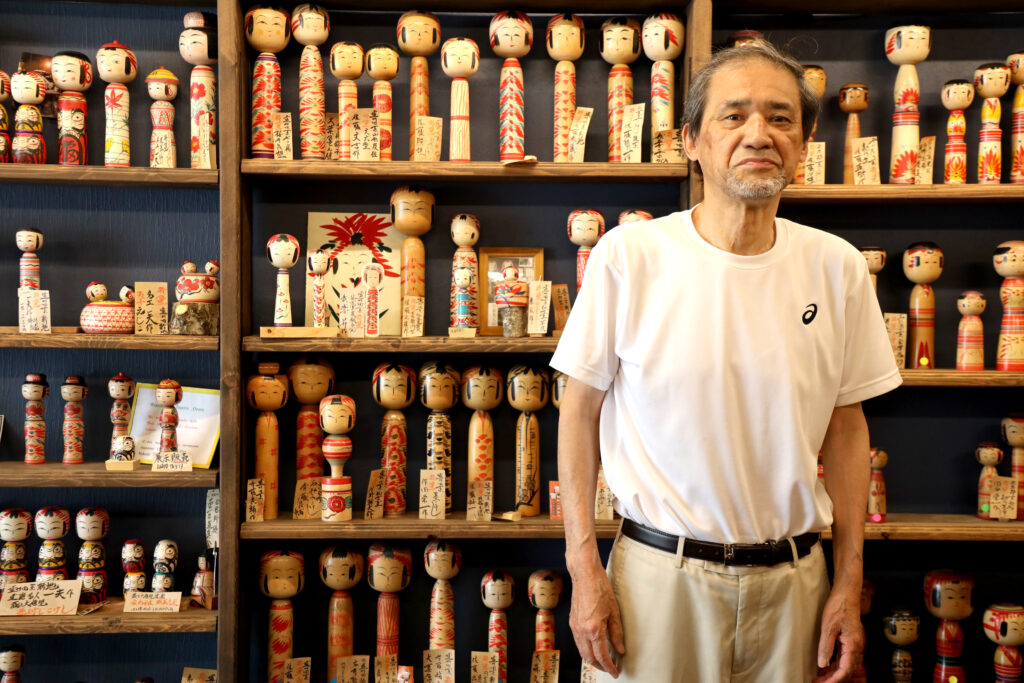
Ozeki Sadanori-san from the Ozeki-ya Antique Kokeshi Shop. Photo by Mayu Kanamori
Just before 1 pm, I went for a short walk and went into a second-hand clothing and antique shop E-link and met Watanabe Takashi-san who was minding the shop. When I walked out of his shop, it began to rain. I went to Ono Shoten, where I met Ono-san and her husband, who said he painted in oils. He said that their shop supplied the ryokans, so if I don’t see what I want, I should ask, since they have most things out the back. I bought two peaches. When I left the shop, the rain had stopped.
Martin ate his peach and went for a walk to the town Kattamine Shrine but returned soon after. He said he would wait for me to go up to the shrine. Martin continued to work in the back room where he set up his computer yesterday. I set up my computer in the front room with the full shopfront so I can watch people go past in the street.
Watanabe-san came to visit after his work at 4 pm. He said he is originally from Fukushima and now lives in Sendai. He drives to Togatta every day. He manages the entire Zao Patio complex which has the E-link, the second-hand clothing and antique shop he was managing, a bakery and a fruit parlour.
Just before 5 pm, I went out to photograph the Kokeshi-bashi Bridge again, where I met two cyclists, Agnes and Antoine from Germany and France, respectively, who are travelling around Japan on their bicycles, and were planning to camp in Togatta for the night. They had cycled across the Zao Range from Yamagata and were on their way to Sendai. Agnes is an artist and was interested in the residency, so they visited our studio. They both agreed to contribute poems for our residency project.
Satoh-san visited with his two friends, and Martin and I went to the town Kattamine Shrine to pay our respects. There is a shrine of the same name on the summit of Katta-dake Mountain called Kattamine Shrine Okumiya (奥宮) and the one in town is called Kattamine Shrine Satomiya (里宮). The deity is moved seasonally between the two shrines, to the Okumiya on the summit in the summer and to the Satomiya at the foot of the mountain in the winter.
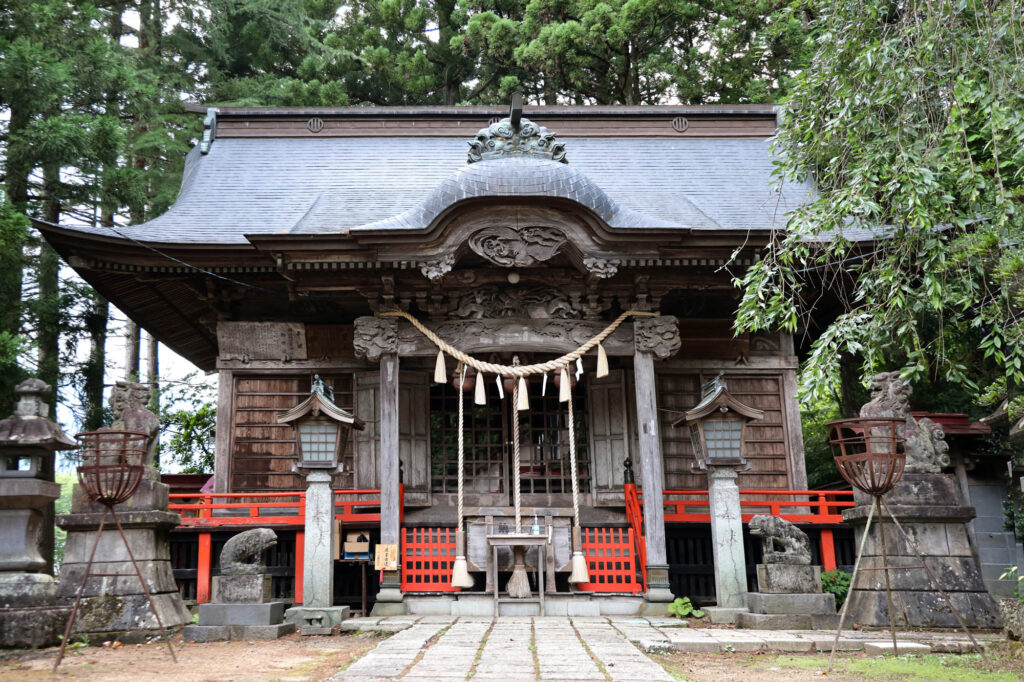
Town Kattamine Shrine (Satomiya). Photo by Mayu Kanamori
We soaked our feet in the ashiyu again, then visited the public onsen, Kami-no-yu, before eating dinner at a different izakaya, Yakata.
We turned off the light near 9 pm.

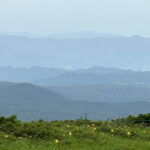

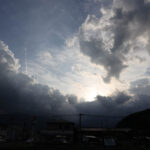
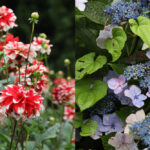


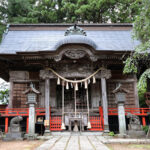
Recent Comments